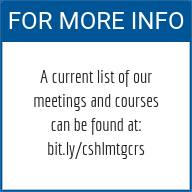Meet Amy Ikui of Brooklyn College. Amy is a professor in the Biology department and returns to CSHL for her second Symposium, the 65th CSHL Symposium focusing on Genome Stability & Integrity. This meeting also happens to be her 21st meeting at the Lab.
Tell us about your research.
We study DNA replication and origin licensing mechanisms in yeast and green algae. Our research is focused on understating how cyclin dependent kinase and phosphatase control DNA replication.
How did you decide to focus on this area/project?
DNA replication is fundamental to all living cells that duplicate the genome. My passion is to understand how DNA is accurately replicated to maintain genome integrity in eukaryotes. My post-doctoral training in Dr. Fred Cross’ lab at The Rockefeller University led me to establish my own research lab where we continue to investigate the molecular mechanisms of origin licensing using eukaryotic unicellular model organisms.
What and/or who is the inspiration behind your scientific journey?
All of my mentors starting from my elementary to graduate school inspired me to start my scientific journey. The most important turning point is when I joined the lab for the first time as an undergraduate student. I was fascinated by molecular biology and cell biology techniques, western blot and DNA sequencing, which can be used to understand how cells function. I decided to pursue my career in the educational setting to inspire future scientists.
Where do you see yourself in five years?
Continue doing my research as a PI if funding is secured, and teach and supervise students and post-docs in my lab.
What do you love most about being a researcher?
To be the first person to discover something important. To meet and discuss our research with my colleague. To setup collaborations.
What drew you to attend this meeting?
I have been attending CSHL meetings since I was a Ph.D. student, almost 20 years ago. I am very excited to attend in-person meeting after 2 years.
What feedback or advice would you share with someone considering to participate in a future CSHL Symposium?
Don’t be shy to ask questions to attendees even if they are established scientists.
What’s the most memorable thing that happened during the Meeting?
Blackford Bar is usually involved.
Thank you to Amy for being this week's featured visitor. To meet other featured researchers - and discover the wide range of science that takes part in a CSHL meeting or course - go here.
Image provided by Amy Ikui







































